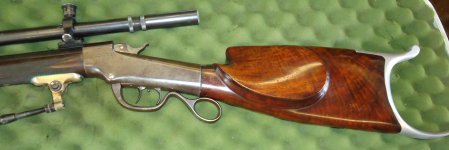There is a difference most definitely. Put a "old vaquero only" load in a new vaquero 45 Colt and it will become obvious in a few shots.
I get picky about the names we use conversationally for Ruger SA revolvers. Because people get sloppy with names, and because Ruger has a generational penchant for using VERY similar names for guns with much different designs, it can be difficult to tell from casual conversation just what specific gun is under discussion.
TO me, there are no "old Vaqueros". There are Vaqueros and New Vaqueros, and the guns are marked that way. I don't mind if you want to say "original" Vaquero, but saying "old Vaquero" can confuse people, some of whom associate "old XXXX" with the original Blackhawk vs, New Model Blackhawk.
Some folks think Rugers names are wonderful, there are so many different models and variations they give collectors a very diverse field to enjoy.
Some people think the close similarity of names between different gun models is a pain in the butt, and then on top of that are the made up names people use.
People who know a big about Ruger's SA names and their history generally get what is meant from context, but people who don't get lost, easily. And, further complicating the issue is that, despite how much I want it to, time doesn't stand still, and new terms get made up and used.
"old Vaquero only load " is a prime example. Pretty sure I know what you mean, but the term just sounds wrong to me. Probably because I grew up living the history that younger folks today only read about.
Ruger introduced the New Model Blackhawk about 1973 or so, a new design SA revolver different from their previous Blackhawks and using a different operating system. They were made on a large frame and one model was the .45 Convertable.
At the time, and for many years afterward, it was the only .45 caliber revolver Ruger made. In the early 70s, handloaders experimented with heavier than standard .45 Colt loadings, which the New Model Ruger .45 would handle, and those loads became (informally) known as "Ruger Only" loads.
About 20 years later, Ruger introduced the Vaquero (1993) and since it was made using the same large frame size as the new Model Blackhawk .45, it will handle the "Ruger Only" loads from the 70s. However, the Vaquero did not exist when those loads were developed, so I feel it incorrect to call them "old Vaquero Only" loads.
Ruger dropped production of the Vaquero about 2008, and replaced the gun with the "New Vaquero", a different, smaller gun, and not suitable for the heavy "Ruger Only" loads.
I've had/have all of them, New Model Blackhawks, Vaqueros, and New Vaquero and while some people don't think the details are important, because "everyone knows what you're talking about", they do matter to me, and so, I whine about it.
Nothing personal, just one of my many quirks.

